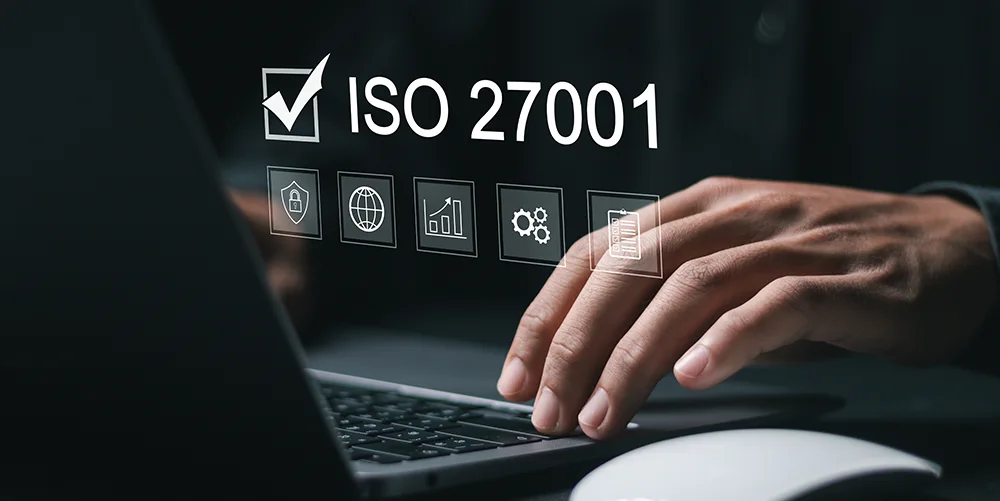6 steps to designing an Identity Access Management strategy

Posted on July 11, 2024 by Louise Howland
Your company data is under constant threat of attack. Cybercriminals are inventing increasingly complex ways to hack into systems to steal employee credentials and sensitive information for their criminal gains.
In today’s digital landscape, adopting an Identity Access Management (IAM) strategy has never been more critical. An IAM strategy safeguards company data by providing robust protection against the dangers of cybercrime and ensuring that only authorised users can access your company’s IT network and assets. But how do you design and implement an IAM strategy effectively?
What is an IAM strategy?
An IAM strategy ensures that any user with access to your company’s IT network complies with strict digital requirements and closely follows clearly defined policies for the protection of systems and sensitive data.
An Identity Access Management strategy leverages technology to allow and restrict access to company systems and data. It achieves this by:
- Identifying and authorising users
- Making user credentials part of the wider company system
- Setting strict parameters to control the level of access they have within the company
In many ways, employees are gateways to your organisation’s data assets, documents, files, and information. When not properly secured, an employee’s credentials can offer an easy route in for cybercriminals intent on wreaking havoc.
According to research, 74% of data breaches can be traced back to the misuse of privileged credentials and access controls. Not only that, but nearly half (49%) of all businesses contain at least one member of staff with greater access privileges than their job specification requires.
If your company is looking to deliver enhanced cybersecurity measures, it’s probably time you implemented an IAM strategy for greater access control and peace of mind.
How can I implement an IAM strategy?

IAM solutions are an effective network management tool that ensures only authenticated users can access company systems and resources, and that strict limitations are in place around data usage. A strong IAM strategy secures data against the spectre of a cyberattack, but also gives employees access to the resources they need to do their jobs.
IAM technology automatically provides these different permission levels for each user so that all access is secure and transparent.
The following 6 steps will help your company construct a robust IAM strategy in the workplace:
1. Assess your current security
The first step in building an IAM strategy is to examine your current level of cyber protection and access controls. This will help identify any gaps or weaknesses in your identity access management approach so that specific needs are met. If you already have an IAM strategy, how do you manage user identities? What are the biggest risks to access and data security? Answering these questions will give you the ideal starting point for your new IAM strategy.
2. Set your goals
It’s important to define your objectives at the outset of any IAM project. This involves highlighting business goals and understanding how IAM can help in this process. For example, your IAM objectives may involve demonstrating full compliance with industry regulations, lowering the risk of cyber threats, or improving employee productivity perhaps with the assistance of AI. Identifying your goals will help you align them with your overall business objectives so you can tailor your IAM strategy accordingly.
3. Make a list of assets and users
Once your IAM objectives are in place, it’s time to make a full register of all company IT assets and resources that require protection, and every user who needs access to systems, resources, and data. Your list should include software apps, databases, hardware, network resources, and devices such as laptops and smartphones. This will give you a full and clear picture of your entire IT suite and user requirements so that you can develop the ideal IAM strategy for your business needs.
4. Create effective IAM policies
Now that your objectives are set and your asset register is up to date, the next step is to develop IAM policies and procedures tailored to your exact business needs. As you might expect, these policies should align with specific industry standards as well as your company objectives. Policies should cover all aspects of IAM including:
- User access and control
- Password policies
- User provisioning policies
- User de-provisioning policies
It is important to document all policies and share them with stakeholders, so they are regularly reviewed, updated, and contain the most effective IAM practices.
5. Select the best IAM technology
IAM technology should always align with your company’s requirements, policies, and goals. This will typically include sourcing the best digital tools for identity and authentication management that prevent unauthorised access to your system, resources, and data. Common IAM strategies include single sign-on solutions (SSO), multi-factor authentication (MFA), plus identity and access control. While SSO may give some companies adequate protection, MFA provides a much higher level of security by requiring users to follow a multi-layered approach when verifying their identity. Finally, your IAM technology should address your future business needs, be fully scalable, and integrate with other software within the organisation.
6. Put your IAM strategy to the test
Having created your IAM policies and chosen the most appropriate technology, all that’s left is to test your IAM strategy in a controlled environment. For best results testing should involve both IT teams and end users. It should involve every aspect of identity access management including authentication, authorisation, and user provisioning protocols. The results gained from testing will help you tweak and refine your IAM strategy and make any essential adjustments so that it is as effective, efficient, and provides maximum security.
These 6 simple steps will help you implement a robust and effective IAM strategy that protects your data, resources, and improves efficiency. Not only that, but it will also minimise the risk of a costly and damaging cyberattack caused by unauthorised user access.
What else should I consider in my IAM strategy?

There are several other key considerations when developing an IAM strategy. For example, does it integrate with other software within your business? How can you transfer data from your old legacy technology to the new one?
When developing an IAM strategy it is important to think about the following three aspects:
Integration
You’ll need to move data from its original source to the IAM strategy. For this, you’ll need full compatibility between both systems for it to work effectively, and that firewall restrictions don’t restrict or prevent the transition process.
Similarly, all applications and services must be connected to the new system in order for IAM to function properly. If these fail, your security defences could be vulnerable to an attack.
User identity transfer
When data transition takes place between the old and new system, users can continue to access accounts located in the destination system so that all information and identity management aren’t compromised in any way. This is often implemented when a destination system sends a new password to the user. This marks the beginning of the end of the old system and all its variants. At this point, it is wise to dismantle the old system before notifying users of this change.
Data migration
There are two common ways to migrate data effectively from one system to another: applications or the data warehouse.
Exporting or importing apps can be done using an Application Programming Interface (API) or a user interface, or even both. Meanwhile, data warehouses often come with features designed to assist migration. Nevertheless, close attention should be paid to the migration of sensitive data and confidential information including user passwords and identity verification. Similarly, you should also perform tests to reveal whether encrypted data is compatible with the new system.
Need help creating your IAM strategy?
Writing an Identity Access Management strategy can be daunting for you and your organisation. With ramsac’s policy support guide you’ll have all the information you need to craft the ideal policy and bolster your cybersecurity defences.






